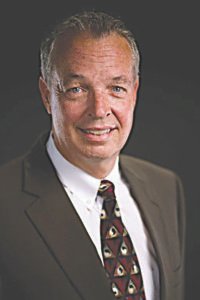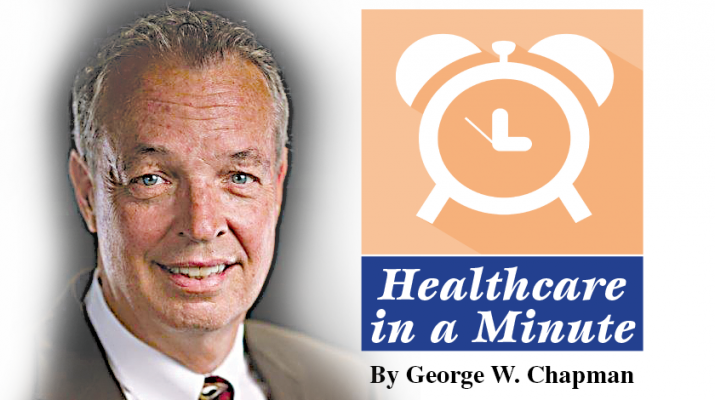Situation may get worse with NYS proposed budget cuts
By George W. Chapman
Over 97,000 people in New York state depend on skilled nursing facilities for their care. For many, it is end of life care. Ninety percent of SNFs in the state have difficulty covering basic operating costs which typically leads to staffing shortages. To make matters worse, the proposed 2024 NYS budget calls for a $500 million cut in SNF Medicaid funding. On average, 70% of SNF patients are covered by Medicaid, so the proposed cuts are financially devastating. Staffing shortages will get worse. This is a 10% cut in the daily reimbursement rate which has not kept up with inflation. Current rates (before the proposed cuts) are based on 2008 costs. Since then, costs have risen 40%. Eleven SNFs closed in 2021 and 2022. Currently, eight more are on the verge of closing this year. To add insult to injury, federal surveys (Medicare) cite SNFs for staffing shortages, consequently lowering a SNF’s overall star rating. (Star ratings range from one to five stars.) It should be noted that Medicare does pay relatively adequately but not nearly enough to offset the low Medicaid rate. In a letter to the NYS legislature, SNF executives are requesting a 16% rate increase to stay afloat which will allow them to increase staffing and prevent further closures. Some perspective helps next time a loved one or friend is in a nursing home.
Rural Hospital Outlook Brighter
 After years of struggling financially, further exacerbated by the recent pandemic, rural hospitals see light at the end of the tunnel. About 100 rural hospitals have closed altogether since 2005 and many more probably would have closed had they not been rescued by a nearby larger healthcare system. About 75% of rural hospital executives revealed in a recent survey that they plan to remain independent and, after years of shrinking, plan to expand services. This is great news for rural residents who depend on their local, albeit small, hospital for primary care, specialty care and emergency services. Industry experts surmise the increased financial viability of rural hospitals will actually make them all the more appealing to larger healthcare systems. Ultimately, merging into a larger regional healthcare system would be the best route to solidifying their future viability.
After years of struggling financially, further exacerbated by the recent pandemic, rural hospitals see light at the end of the tunnel. About 100 rural hospitals have closed altogether since 2005 and many more probably would have closed had they not been rescued by a nearby larger healthcare system. About 75% of rural hospital executives revealed in a recent survey that they plan to remain independent and, after years of shrinking, plan to expand services. This is great news for rural residents who depend on their local, albeit small, hospital for primary care, specialty care and emergency services. Industry experts surmise the increased financial viability of rural hospitals will actually make them all the more appealing to larger healthcare systems. Ultimately, merging into a larger regional healthcare system would be the best route to solidifying their future viability.
Tracking Prior Authorization Denials

Prior authorizations for care have created anxiety for patients and frustration for physicians. Prior authorizations slow care and interfere with treatment plans. Consequently, the Federation of American Hospitals has petitioned CMS (Medicare/Medicaid) to factor in a Medicare Advantage plan’s denial rate when determining their star rating from one to five. The FAH wants CMS to monitor the percentage of a plan’s prior authorizations that are finally denied or denied than overturned. A high denial rate would reduce their star rating. The hope is to discourage insurers from abusing prior authorizations and to promote getting coverage decision right and timely the first time. MA plans have overturned initial denials 80% of the time in 2021. The Office of Inspector General reported traditional Medicare would have covered 13% of denials. The five-star rating system impacts how much Medicare pays an Advantage plan annually to care for their members. The FAH is requesting a three-day turnaround for urgent prior authorizations and seven days for standard authorizations. The AMA would like to see those times shortened further.
Private Practice Shrinking
Ten years ago, 60% of physicians were in private practice. (If you go back decades, it was probably close to 90%.) In 2022, 47% of active physicians were in private practice. The downward trend has been accelerating. Medicare rates, typically used as a benchmark or guide by commercial carriers, have remained virtually flat over the last 20 years. Operating expenses, obviously, have not. Constantly changing the hoops physicians must jump through to get paid adds to the expense and frustration facing physicians. Increasingly, younger physicians, wary of the financial difficulties, frustrations and time commitment of private practice are opting for employment with hospitals, hospital centric healthcare systems or even Walmart or CVS. As employees, they can focus on patient care and maintain a reasonable life-work balance. Hiring and retaining staff, updating equipment, reimbursement rates and balancing the books are someone else’s problem. Most expect the percent of physicians in private practice to plummet over the next 10 years as baby boomer docs are replaced by the new generation of docs. So, what does that mean for patients? Insurance companies long ago inserted themselves in the doctor-patient relationship, so where your doc works won’t make a difference. Unfortunately, many patients don’t first select their physician. They first select an insurance plan based on benefits, especially drug coverage. If your physician of choice happens to be in the plan selected, then great. Physicians will always do what’s best for their patients.
No Surprises
 Surprises can be nice, except when it’s an unexpected medical bill. The No Surprises Act went into effect a couple of years ago. So far, it has prevented more than 10 million surprise medical bills from out-of-network or non-participating providers. A classic scenario was you went to a participating hospital emergency room that was in your plan. Little did you know, but the ER physician group was not in your plan. Your plan covered the ER facility charge and what it would have paid a participating physician. Consequently, you received a surprise bill from the hospital or the physician group for the difference between their full charge and what your plan paid. Another surprised bill could come from a out-of-network specialist that was called in to treat you. You assumed if the hospital was in your plan, so would the physicians. Thanks to the NSA, two-thirds of insurers have since expended their networks of participating providers to include the physicians that treated you in the participating ER. No plans have decreased their networks because of the NSA. 80% of the now much fewer NSA claims are resolved without having to go through arbitration or dispute resolution.
Surprises can be nice, except when it’s an unexpected medical bill. The No Surprises Act went into effect a couple of years ago. So far, it has prevented more than 10 million surprise medical bills from out-of-network or non-participating providers. A classic scenario was you went to a participating hospital emergency room that was in your plan. Little did you know, but the ER physician group was not in your plan. Your plan covered the ER facility charge and what it would have paid a participating physician. Consequently, you received a surprise bill from the hospital or the physician group for the difference between their full charge and what your plan paid. Another surprised bill could come from a out-of-network specialist that was called in to treat you. You assumed if the hospital was in your plan, so would the physicians. Thanks to the NSA, two-thirds of insurers have since expended their networks of participating providers to include the physicians that treated you in the participating ER. No plans have decreased their networks because of the NSA. 80% of the now much fewer NSA claims are resolved without having to go through arbitration or dispute resolution.
Doomsday Scrolling
 More and more of us, especially adolescents and young adults, are experiencing anxiety, depression, anger or helplessness. Social media and 24/7 world news coverage have contributed to the crisis in mental health. According to experts, we have naturally evolved to be aware of potential threats around us for survival. Before highly invasive social media and ubiquitous 24/7 world news networks, most of our perceived threats and bad news came from and maybe an hour of local and national news. The number of perceived and real threats were relatively low and more easily managed. We can only handle so much bad news. Doomsday scrolling refers to the habit (addiction?) of virtually seeking threats or bad news via social media or 24/7 cable news. We are now bombarded with bad news: wars, natural disasters, food insecurity, drug addiction, inept politicians and injustice. Few of us can handle this overload without getting depressed, anxious or angry. Mental health experts are urging us to put our phones down and limit cable TV news viewing. In other words, limit our doomsday scrolling. People who have done so have reported they are much happier, less anxious and have time for more pleasant activities.
More and more of us, especially adolescents and young adults, are experiencing anxiety, depression, anger or helplessness. Social media and 24/7 world news coverage have contributed to the crisis in mental health. According to experts, we have naturally evolved to be aware of potential threats around us for survival. Before highly invasive social media and ubiquitous 24/7 world news networks, most of our perceived threats and bad news came from and maybe an hour of local and national news. The number of perceived and real threats were relatively low and more easily managed. We can only handle so much bad news. Doomsday scrolling refers to the habit (addiction?) of virtually seeking threats or bad news via social media or 24/7 cable news. We are now bombarded with bad news: wars, natural disasters, food insecurity, drug addiction, inept politicians and injustice. Few of us can handle this overload without getting depressed, anxious or angry. Mental health experts are urging us to put our phones down and limit cable TV news viewing. In other words, limit our doomsday scrolling. People who have done so have reported they are much happier, less anxious and have time for more pleasant activities.
 George W. Chapman is a healthcare business consultant who works exclusively with physicians, hospitals and healthcare organizations. He operates GW Chapman Consulting based in Syracuse. Email him at gwc@gwchapmanconsulting.com.
George W. Chapman is a healthcare business consultant who works exclusively with physicians, hospitals and healthcare organizations. He operates GW Chapman Consulting based in Syracuse. Email him at gwc@gwchapmanconsulting.com.

